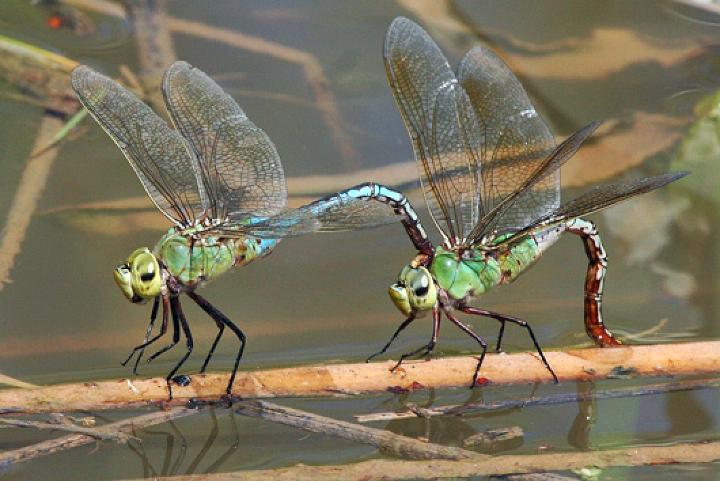 |
Canku Ota
|
 |
|
(Many Paths)
|
||
|
An Online Newsletter
Celebrating Native America
|
||
|
March 2020 - Volume
18 Number 3
|
||
|
|
||
|
Dragonflies Drive
Dedicated Fans To Refuges
|
||
|
by U.S. Fish and Wildlife
Service
|
||
|
They're not dragons, and they're not flies. But they boast a swelling fan base. You might call dragonflies the stunt pilots of the insect world. They wear flashy colors, dart at speeds of up to 30 miles per hour, boast ancestors that predate dinosaurs ... and they even mate in mid-air.
These are just some of the reasons that the insects are gaining attention, both on and off national wildlife refuges. Dragonfly festivals are popping up across the country and a crop of new field guides are making the rounds around American towns and cities. "People are fascinated with finding dragonflies," says David True, refuge ranger at Aransas National Wildlife Refuge in Texas. "It is a growing thing." Bruce Lund, with the Friends of the Desert National Wildlife Refuge Complex in Nevada, agrees. He credits rising interest, in part, to two popular new field guides by zoologist Dennis Paulson and new state guides that help dragonfly enthusiasts identify their finds. Then there are the viewer-friendly habits of the insects themselves. "People are attracted to these insects because they are big [compared to other insects], colorful, and active in daytime," says Lund, who leads periodic refuge dragonfly tours. Adults and children also like dragonflies' fanciful names: Vivid Dancer, Sparkling Jewelwing, Furtive Forktail, Stygian Shadowdragon, Harlequin Darner, Dragonhunter, Ebony Boghaunter are some highlighted on a fact sheet at Aransas Refuge. For their parts, national wildlife refuges are happy to host dragonflies not just because they're native wildlife but because they're natural mosquito controls and indicators of clean water. Dragonflies are generally most abundant in mid to late summer. Dragonflies and damselflies are members of the biological order odonata, meaning "toothed ones." ("They don't have teeth; don't ask me why they're called that," says True.) Some refuges known for their dragonflies include:
Did you know? Dragonflies boast two sets of wings, which they flap at about 30 beats per second. Dragonflies have huge compound eyes, which give them almost 360-degree vision. Dragonflies develop a taste for meat early. As nymphs, they snack on water insects, worms, mosquito larvae and small fish. When at rest, a dragonfly holds its wings open, either at right angles to its body or downward. A damselfly closes its wings, usually over its abdomen. Dragonflies don't have stingers and can't harm you. Myths abound about dragonflies. Get more dragonfly facts here and here. Download pics from our Flickr site ... and don't forget to share with your friends!
|
||
|
|
||
|
|
||
| Canku Ota is a free Newsletter celebrating Native America, its traditions and accomplishments . We do not provide subscriber or visitor names to anyone. Some articles presented in Canku Ota may contain copyright material. We have received appropriate permissions for republishing any articles. Material appearing here is distributed without profit or monetary gain to those who have expressed an interest. This is in accordance with Title 17 U.S.C. Section 107. | ||
|
Canku Ota is a copyright ©
2000 - 2020 of Vicki Williams Barry and Paul Barry.
|
||
 |
 |
|
|
The "Canku
Ota - A Newsletter Celebrating Native America" web site and
its design is the
|
||
|
Copyright ©
1999 - 2020 of Paul C. Barry.
|
||
|
All Rights Reserved.
|
||
